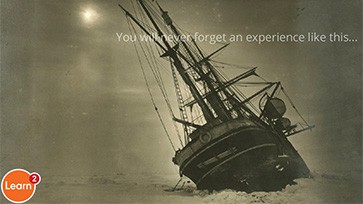Save the Titanic Leadership Challenge
A leadership development course that immerses your leaders in a reimagining of the renowned tragedy, reigniting their love of learning & compelling them to pull together to secure the future of your company.
There is mounting pressure to select talent in a way that is inclusive, encourages diversity, and allows the team members to self-select and illustrate they are ready for leadership development. Many leaders are now aware of structural bias. where the process of how you select talent to invest in is biased by the leader’s perceptions. Talent immediately feels the structural bias, which affects motivation and retention.
Structural bias feels like a hidden agenda. Where the system is structured in a way that that pushes some leaders forward and some leaders back. Companies who pride themselves on innovation often pride themselves in inclusion. Innovation increases diversity of perspective which in turn creates diversity of thought and willingness to question approaches in uniquely valuable ways. Because of this, the smartest companies are starting to recognize the cost of structural bias.
The types of structural bias that most limit companies exist in hiring, onboarding, talent development, talent identification and the unconscious bias of having leaders fulfil these roles on their own people or part of a primarily qualitative assessment process.
Many of our clients (over 50%) are recognized as “best places to work” – so they are keenly interested in reducing structural bias in recruitment and hiring. A massive opportunity exists to unlock talent by democratizing development in a way that allows for quantitative measures of talent and talent readiness.
The optimal solution is to base selection on a set of numbers - ones that are meaningful to your business, your leaders, and the development opportunity.
Using a numbers-based talent identification systems illustrates the impact a team member has on the business. Numbers shift the conversation from perception to results reality.
The benefits of a numbers-based talent development and identification system include:
All learning programs should include a challenge opportunity where the participant gets to illustrate the value they can create from the investment in their capabilities. This builds a culture of impact where rank doesn’t act as a barrier to providing daily impact on the business. Teams forged in participant-driven experiences thrive when having to make decisions under pressure.

A leadership development course that immerses your leaders in a reimagining of the renowned tragedy, reigniting their love of learning & compelling them to pull together to secure the future of your company.

Explore strategic leadership with a leadership development program that aims to empower participants to achieve goals and lead differently.

Using colour as a metaphor, teams develop a powerful and memorable framework for understanding each other and improving team dynamics!

60% of executives say changing attitudes is a huge challenge. Build the capacity to do this well & transform your organization for the better.

This leadership development course will help you uncover leadership potential in your team.